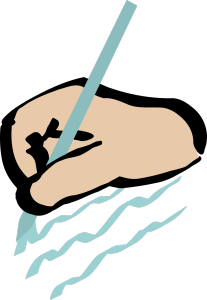…or ‘nine and a half things NOT to do as part of the writing process’.
All writers have a process of writing unique to them. I suspect this depends on how someone’s imagination works, how organised she/he is and what their personal  preferences are. But, learning by trial and error, I’ve identified certain common factors or stages which are important for me, as I begin to write my third book. And I’ve identified my mistakes.
preferences are. But, learning by trial and error, I’ve identified certain common factors or stages which are important for me, as I begin to write my third book. And I’ve identified my mistakes.
The out-line – unless a writer is hugely experienced and/or talented enough to write without one, an out-line is important. It helps refines one’s thoughts about a book, its themes as well as its plot-lines. It also helps avoid running down culture de sacs later.
I didn’t write an out-line for ‘The Village’, because I began with the central story ‘The Summer Fete’ and decided, at that point, to write twelve tales representing twelve months in the life of a village. So I had a pre-defined structure. Nor did I out-line ‘On the Frontier’ because I already had a story, a plot and characters to work on – my original serial story for my nephew. In both cases I had to do MAJOR re-writes later in the process because of not having a clear out-line at the start. This was a lot of extra work and hard to do, because by then I was committed to my characters and narrative.
Think of this as having to re-break a bone in order to set it properly. Much better to consider all ways of setting it at the outset and choosing the best one. Write an out-line. Don’t skip it.
The first draft – I have had to learn to treat the first draft as just that. I was much too precious about it. Often many of the actual words of the first draft don’t make it to publication. One writer of my acquaintance tells me that, for her, it’s important to just get something down on paper, almost regardless of quality, all the clever stuff comes later. She’s on to her 9th novel and has hit the NY Times Best-seller list so it works for her.
The first draft is important, but I now treat it with much less awe than formerly. It’s only a first draft.
The re-write (s) – every writer re-writes. Some do it a lot. Hemingway, for example, was famous for re-writing and re-writing, sometimes up to a hundred versions of a short story. This isn’t just to do with choice of words, although it is that too, but it’s also to do with plot details, timing and character. I knew that writers wrote and re-wrote. I just didn’t realise how much.
 In ‘The Village’ my early drafts had far too many characters (some readers tell me it still has). I had to expunge characters I knew and felt affection for. This, in turn, meant plot changes so as to cope with fewer characters. In ‘On the Frontier’ my focus was too diffuse, my characters had difficulties to overcome but insufficient jeopardy. In order to improve it I had to import more danger, meaning significant plot changes. These issues arose because I hadn’t thought out the whole story properly ( see above ).
In ‘The Village’ my early drafts had far too many characters (some readers tell me it still has). I had to expunge characters I knew and felt affection for. This, in turn, meant plot changes so as to cope with fewer characters. In ‘On the Frontier’ my focus was too diffuse, my characters had difficulties to overcome but insufficient jeopardy. In order to improve it I had to import more danger, meaning significant plot changes. These issues arose because I hadn’t thought out the whole story properly ( see above ).
Unless you’re really a genius, there’s no avoiding re-writing.
The developmental edit – some writers don’t have this stage. New ones, like me, need it. It was at this stage that I picked up both the issues mentioned above. An experienced editor helps enormously to spot the problems with manuscripts which might, by now, be on the third or fourth re-write. In my own case I did know about the problems, one knows when something isn’t right, but I still needed them pointing out to me and I needed the subsequent discussion about how to tackle them.
I have been very fortunate in my editors, who have been gentle but firm. I have appreciated their advice and, with one exception, I have followed it. There is no point in paying someone for their expertise and then ignoring them. The exception was my refusing to turn ‘The Village’ into a novel. I wanted to use the short story for to build up a multi-faceted picture of village life.
Nevertheless one needs to find the right editor. Many use The Chicago Manual of Style and don’t deviate from it. You want more flexibility and experience than that, some individual attention. Also, editing is probably the biggest expense in editing a book, so it needs to be productive. You might not hit upon the right person straight away.
That’s five lessons. More on the writing process later in the week, including – a list of editors and where to find them, beta readers and how they help, copy and line editing and doing one’s own final edit.
If you enjoyed reading this piece you might also like How NOT to promote a book


 RSS – Posts
RSS – Posts
Pingback: Meet Author J.J. Anderson – Mercedes Fox ~ Author